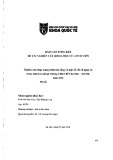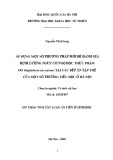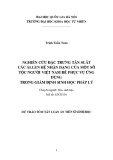
EURASIP Journal on Applied Signal Processing 2004:4, 542–558
c
2004 Hindawi Publishing Corporation
Handwriting: Feature Correlation Analysis
for Biometric Hashes
Claus Vielhauer
Multimedia Communications Lab (KOM), Darmstadt University of Technology, 64283 Darmstadt, Germany
Platanista GmbH, 06846 Dessau, Germany
Faculty of Computer Science, Otto-von-Guericke University, 39106 Magdeburg, Germany
Email: claus.vielhauer@iti.cs.uni-magdeburg.de
Ralf Steinmetz
Multimedia Communications Lab (KOM), Darmstadt University of Technology, 64283 Darmstadt, Germany
Email: ralf.steinmetz@kom.tu-darmstadt.de
Received 17 November 2002; Revised 9 September 2003
In the application domain of electronic commerce, biometric authentication can provide one possible solution for the key man-
agement problem. Besides server-based approaches, methods of deriving digital keys directly from biometric measures appear to
be advantageous. In this paper, we analyze one of our recently published specific algorithms of this category based on behavioral
biometrics of handwriting, the biometric hash. Our interest is to investigate to which degree each of the underlying feature param-
eters contributes to the overall intrapersonal stability and interpersonal value space. We will briefly discuss related work in feature
evaluation and introduce a new methodology based on three components: the intrapersonal scatter (deviation), the interpersonal
entropy, and the correlation between both measures. Evaluation of the technique is presented based on two data sets of different
size. The method presented will allow determination of effects of parameterization of the biometric system, estimation of value
space boundaries, and comparison with other feature selection approaches.
Keywords and phrases: biometrics, signature verification, feature evaluation, feature correlation, cryptographic key management,
handwriting, information entropy.
1. MOTIVATION
Today, a wide spectrum of technologies for user identifica-
tion and verification exists and a great number of the systems
that have been published are based on long-term research.
The basic concept behind all biometric systems is the idea
to make use of machine-measurable traits to distinguish per-
sons. In order to be adequate for this process, a number of
requirements must be fulfilled by a human trait feature, see
[1]. For our working context, the following four are of main
interest:
(i) uniqueness: the feature must vary to a reasonable ex-
tent amongst a wide set of individuals (intervariabil-
ity);
(ii) constancy (permanence): the feature must vary as little
as possible for each individual (intravariability);
(iii) distribution (universality): the feature must be avail-
able for as many potential users as possible;
(iv) measurability (collectability): the feature must be elec-
tronically measurable.
Biometric characteristics, which fulfill the above require-
ments, can be classified in a number of ways, for example,
see [2,3]. One common approach is to divide into measures,
which are either originating from a physiological or a behav-
ioral trait of subjects, although it has been shown that every
process of capturing biometric measures includes behavioral
components to some extent [2]. In the context of our work
based on handwriting, we use the terminology of passive and
active biometric schemes to clearly point out the aspects of
the user awareness and cooperation.
Active schemes include all schemes taking into account
time-relevant information such as voice and online hand-
writing recognition, keystroke behavior, and gait analysis.
Such biometric features require a specific action from the
users and thus can only be obtained with their cooperation.
An example for this cooperative approach is the signature-
based user authentication, where the user actively triggers
the verification process by feeding the system with a writ-
ing sample. Passive traits like fingerprint and face recogni-
tion, hand geometry analysis or iris scan, as well as the offline






























